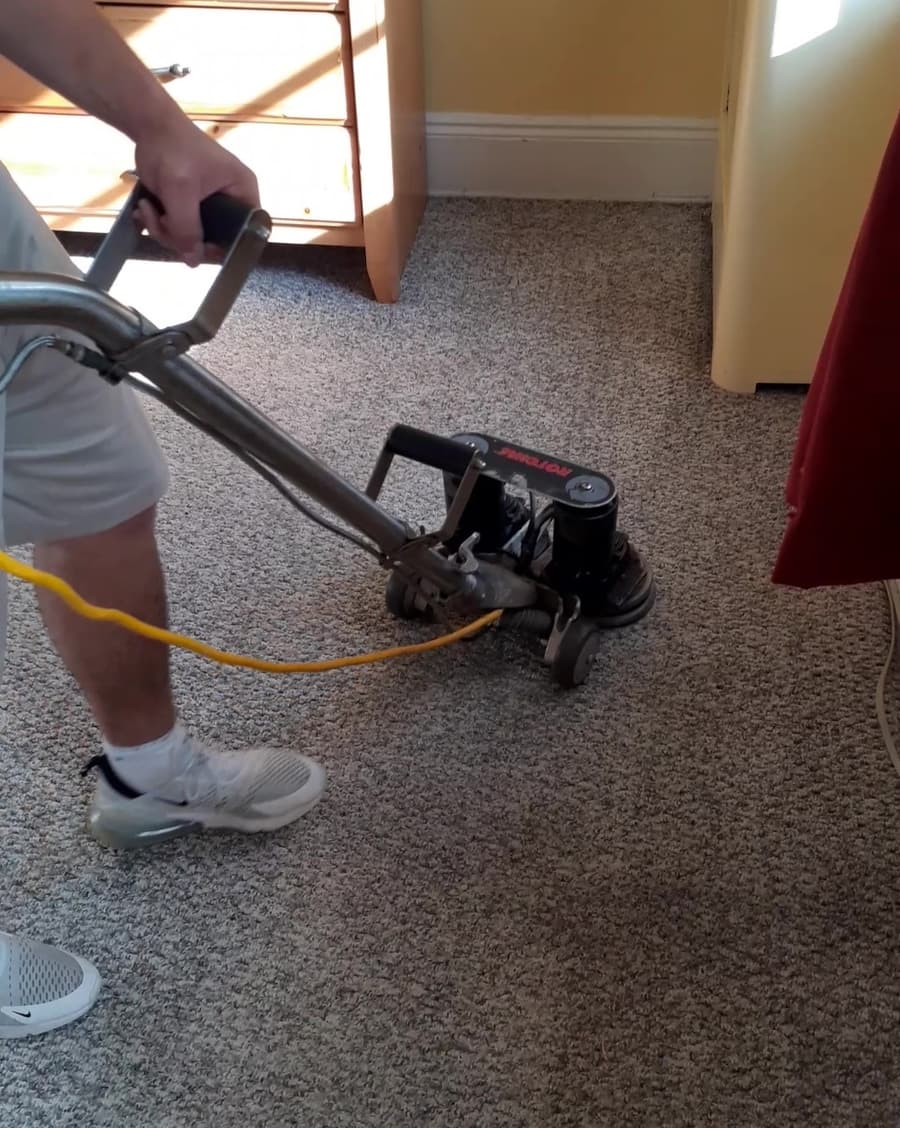Carpet Deep Cleaning: The Ultimate Option for Stubborn Spots and Smells
An In-Depth Check Out Carpet Cleansing Kinds: From Heavy Steam Cleansing to Dry Cleaning, Which Approach Is Best for Your Needs?
When it concerns keeping the look and longevity of your rugs, choosing the proper cleansing technique is paramount. With choices varying from vapor cleansing, which succeeds in deep sanitation, to dry cleansing techniques that deal with delicate fibers, the choice can be complex. Each technique provides distinctive benefits and considerations that hinge on aspects such as rug material and the degree of staining. Recognizing these subtleties may reveal unusual insights that could considerably impact your carpet care technique, resulting in a more educated choice customized to your certain requirements.
Overview of Rug Cleansing Methods
While numerous carpeting cleansing techniques exist, each technique is created to deal with particular cleansing requirements and rug types efficiently. Recognizing these techniques is important for picking one of the most appropriate method tailored to private situations.
One of the most common techniques is dry cleaning, which makes use of very little wetness and specialized cleaning substances. This approach is especially beneficial for delicate carpeting fibers that may be damaged by extreme water (carpet deep cleaning). One more widespread choice is warm water removal, typically referred to as steam cleansing, which utilizes heated water and cleansing agents to get rid of dirt and stains deeply ingrained within the carpeting fibers
Encapsulation cleansing is another modern-day technique, making use of synthetic cleaning agents that crystallize dirt fragments. This method is efficient and decreases drying out time, making it excellent for business setups. Additionally, bonnet cleaning utilizes a rotary buffer with absorptive pads to raise surface area soil, frequently utilized in resorts and high-traffic areas for quick cleanings.
Inevitably, the choice of carpet cleansing technique depends upon aspects such as rug type, degree of soiling, and preferred results. By thoroughly considering these companies, variables and homeowners can make certain the longevity and look of their carpets.
Heavy Steam Cleaning Explained
Among the most reliable carpeting cleansing techniques is heavy steam cleansing, also called warm water extraction. This technique makes use of high-temperature water, commonly heated up to around 200 degrees Fahrenheit, to penetrate carpeting fibers and loosen dust, discolorations, and allergens. The process starts with pre-treatment of greatly soiled locations, complied with by the application of the hot water option. As the water is injected right into the rug, it damages down the gunk, permitting it to be effectively removed.
Heavy steam cleaning is specifically effective for deep cleaning carpets, as it not just gets rid of surface dirt however likewise removes bacteria and allergen, adding to a healthier interior setting. The method is appropriate for different kinds of carpets, including those made from synthetic and natural fibers.
After the extraction process, carpets might retain some dampness; nonetheless, with appropriate equipment, drying out times can be significantly minimized. Routine heavy steam cleaning can lengthen the life of carpets while boosting their appearance. In general, steam cleansing sticks out as a comprehensive remedy for keeping tidy, fresh carpets, making it a favored option for both business and domestic setups.
Dry Cleansing Strategies
Dry cleansing methods provide a reliable alternative to standard heavy steam cleansing, particularly for rugs that may be delicate to moisture or require a quicker drying out time. This method makes use of specialized cleaning solvents as opposed to water to eliminate dirt and spots, making it ideal for fragile fabrics and rugs that might be harmed by too much dampness.

Another method uses solvent-based cleansing options, which are used to the carpet utilizing a low-moisture method. This approach minimizes the threat of shrinking or color bleeding while effectively lifting discolorations.
Dry cleansing is specifically helpful for commercial settings or houses with high foot traffic, as it guarantees minimal disturbance. Generally, these approaches provide a trustworthy choice for preserving carpets without the extensive drying times related to damp cleansing techniques.
Comparison of Cleaning Approaches
When evaluating different carpeting cleaning approaches, it is vital to weigh the advantages and drawbacks of each technique to determine the most suitable choice for particular needs. Vapor cleaning, typically thought about the most efficient method, uses hot water removal to eliminate ingrained dust and allergens. Nevertheless, it requires longer drying times and might not be excellent for delicate carpets.
On the other hand, completely dry cleansing techniques, such as encapsulation and bonnet cleansing, give quicker drying times, making them easier for domestic settings. These methods use minimal wetness, which lowers the threat of mold and mildew growth but may not attain the very same level of deep cleaning as heavy steam cleansing.
Shampooing is an additional carpet deep cleaning service alternative, effective for surface dirt but frequently leaves deposits that can bring in dirt gradually - deep carpet cleaning services. carpet deep cleaning. Additionally, it's labor-intensive and might require expert treatment for comprehensive outcomes
Selecting the Right Technique
Picking the appropriate carpeting cleaning method rests on several elements, consisting of the type of carpeting, the level of soiling, and the preferred outcomes. Various rugs, such as woollen, synthetic, or natural fibers, react distinctively to different cleaning strategies. As an example, heavy steam cleansing, which utilizes warm water removal, works for synthetic carpets yet might damage fragile fibers like woollen.
The degree of soiling plays an essential duty in technique choice. Heavily soiled carpets could need deep cleansing methods like steam cleaning or encapsulation, whereas lightly dirtied carpetings might benefit from simpler strategies such as completely dry cleansing or vacuuming.
Desired outcomes likewise affect the selection of cleansing approach. If fast drying out is a priority, dry cleansing approaches are preferable, as they require minimal dampness. On the other hand, if the goal is to remove persistent discolorations and irritants, heavy steam cleaning could be the far better option regardless of longer drying times.
Ultimately, examining these factors assists property owners and specialists make informed choices, guaranteeing that the chosen technique not just cleans up properly but also protects the honesty and longevity of the carpeting.
Verdict
In final thought, choosing an ideal rug cleaning approach pivots on specific rug types and private cleansing requirements. Steam cleansing supplies depth and hygiene, while dry cleaning supplies speed and benefit for moisture-sensitive products.
